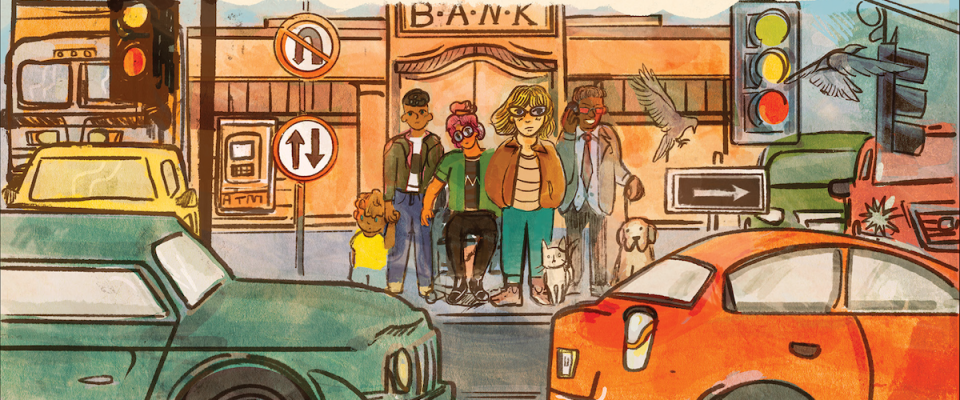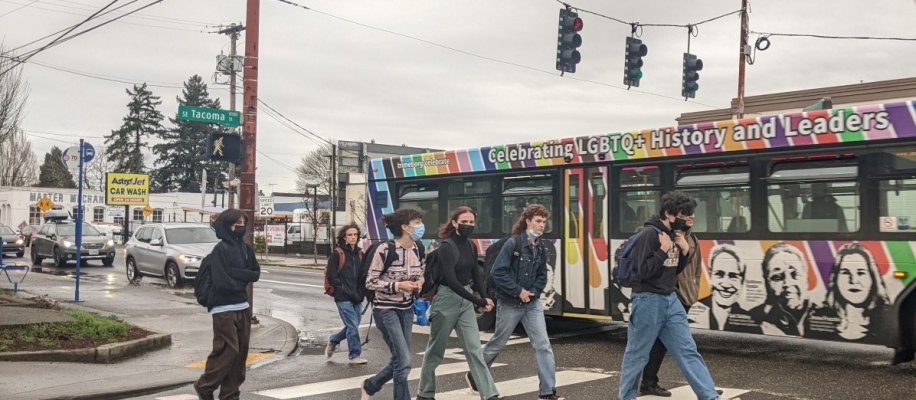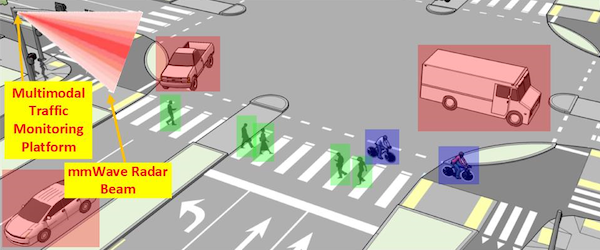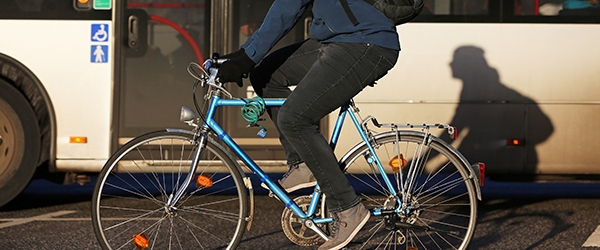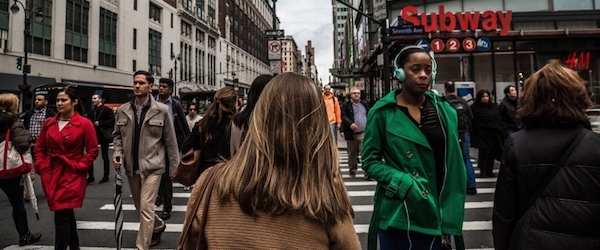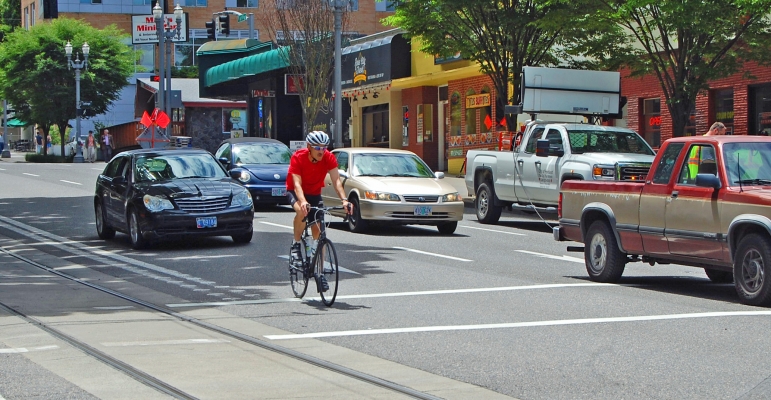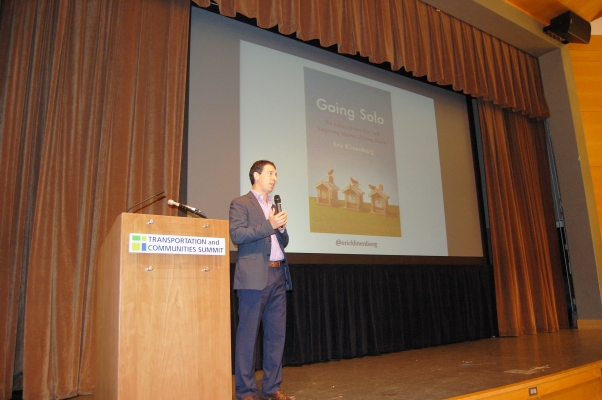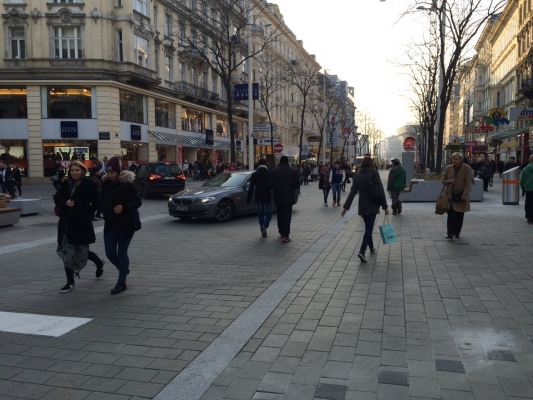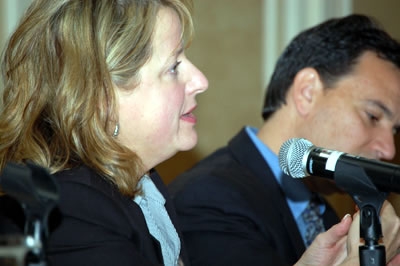To be published later this spring is some of the first bicycle-focused research into shared space, a controversial urban design approach pioneered in the Netherlands in the 1990s.
Allison Duncan, a PhD candidate in urban studies & planning at Portland State University, earned a NITC dissertation fellowship in 2014 and used the research grant to study shared space intersections in the United Kingdom.
Shared space designs have recently been adopted at a handful of sites in the UK and others scattered across Europe, Australia and New Zealand. They are characterized by a lack of physical guidelines such as curbs, road surface markings and traffic signs to define who has the right-of-way.
The idea is for pedestrians, cars and bicycles to mingle in a common zone and use eye contact and natural communication to make sure no one gets hurt.
“Cyclists and pedestrians are supposed to be able to treat it more like a plaza and just cross where they want to, and drivers are supposed to yield,” Duncan said.
As a street design scheme, shared space isn’t exactly new. It’s more or less the way all streets were designed until the advent of cars, and is still the norm in many Asian countries where cars share the roads with a crowd of two- and three-wheeled...
Read more
